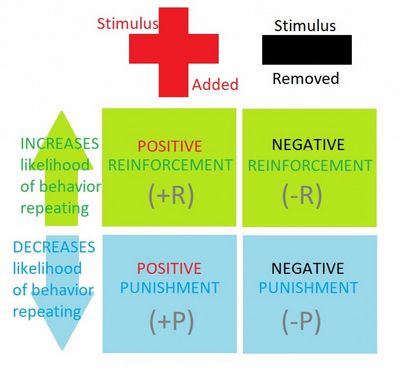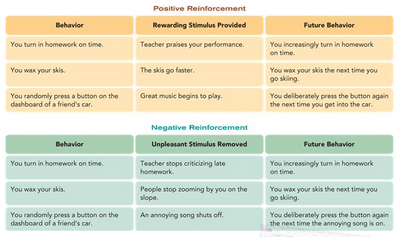Negative reinforcement is an aggressive classroom management tool that seeks to remove (or “reduce”) negative stimuli from children to promote positive behaviors.

For this to be effective, however, you must be able to apply it quickly to help children catch up.
If you want to use negative reinforcement, you should look at negative reinforcement examples to learn how it can be a useful tool in your classroom. Most schools are now using some form of this kind of instruction. It works by using one or more types of punishment, such as time out or punishment with a zero-tolerance policy on negative behavior. A school administrator will determine which types of punishments can be used in the classroom and will provide a variety of negative reinforcement examples.
Some negative reinforcement examples will seek to change the behavior of a student by getting them to start behaving in a way that promotes positive behavior. For example, if a child throws a ball across the room, he may be asked to clean it up or show some sort of empathy towards the child that has made the mistake. These types of lessons will not make the child stop throwing balls; they simply teach him how to act appropriately. Another example may be a student who is being disrespectful. The instructor may say something like, “When you talk to me like that, you look like a fool.”
Other types of positive reinforcement will focus on helping the student to recognize his or her behavior. This could mean that a child who gets all upset when he has to use the bathroom, does not behave in this way when he is left alone in his room.

The child may not even notice that he is doing anything wrong until the punishment has stopped. This type of reinforcement can also be more subtle than the previous examples.
When a school uses this type of punishment, a student that is caught performing an inappropriate behavior is often given a warning before being punished with negative reinforcement. At first, this may seem like nothing more than a form of punishment, but the problem that has been ignored might still exist. If this problem cannot be ignored and if it continues, then the same student may be punished with another type of punishment.
Another type of negative reinforcement will be a time out. When this occurs, a student will have to stay in the classroom until the lesson or activity is completed. This can be done with a warning, a time out, or through using a time out clock. The child may be removed from the class during the lesson, but not expelled.
As you read through the various types of negative examples that will be given to students, it may become clear that the best course of action in each situation may be different. In some cases, a teacher may not need to use any type of punishment to encourage a student to behave.
Other times, however, the teacher may choose to use the use of punishment or negative reinforcement for the same behavior. The choice should be up to the teacher to decide the best way to teach.

Regardless of which type of punishment or negative reinforcement is used, remember that it is your responsibility to make sure that this type of teaching is effective. If the same behavior does not change, it is up to you to find a different lesson plan or method for that same behavior.
If negative behaviors are not dealt with in the appropriate way, they can turn into habits. Habits are hard to break, so if these behaviors continue, it is up to you to take steps to correct them. In most cases, they can be broken by a combination of proper training and a positive way of dealing with the situation.
In order for a teacher to use a combination of negative reinforcement and positive reinforcement effectively, she or he will want to be sure that the correct information is provided. The goal should be to instill a feeling of shame in the student. that will make the behavior less likely to occur again. If there is a sense of shame, the student will feel embarrassed and more likely to do the appropriate thing.
In addition to the fact that your child will be embarrassed about having bad habits, negative behaviors are also likely to be treated in a harsher manner by the teacher. Your job as a teacher is to teach these things to the student, not to make them worse. If a punishment is done properly, they will be treated more effectively than when they are handled in a manner that does not involve punishment.